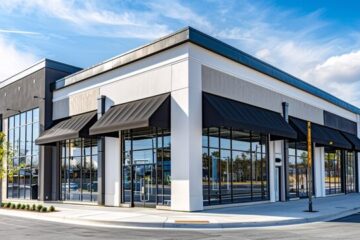In the current fast-paced world of online shopping, offering a smooth and engaging online shopping experience is essential.
Nevertheless, a multitude of e-commerce platforms find it challenging to meet evolving customer demands because of traditional online store systems.
This is where headless commerce becomes essential, providing a creative and versatile option for companies. It safeguards the company’s online presence for the future.
Considering the need for improved customer experiences and simpler digital integration, 63% of businesses intend to implement headless architecture. Separating the front-end user experience from the back-end commerce system frees companies from the limitations of single-platform solutions.
Headless commerce can offer the agility required to address changing customer demands to scale quickly, personalize experiences, or streamline operations.
In this article, we will discuss how headless commerce can increase the performance of your online store and ecommerce strategy.
What is Headless Commerce And How Does It Work?
The headless commerce architecture is different from your traditional ecommerce platforms. Traditionally, the front and back end were bound together. As a result, any changes in the user interface or experience led to changes in the data.
On the contrary, headless commerce uses APIs (Application Programming Interface) through which both ends can communicate without constraints, providing you the freedom to carry out the operations without any issues.
Headless commerce is also helpful for mobile applications, smart devices, and other digital touchpoints, as it efficiently manages core business operations.
The Benefits of Using Headless Commerce
1. Personalization
The reason why headless commerce is becoming popular is that it offers personalization in operations.
This means that the specific needs of your business and your clients can be met through headless commerce. It allows you to incorporate sophisticated tools like speech recognition, VR, etc., for the interface without interference from the back end.
The front-end and back-end separation makes it easier to redesign the layout, add new elements, or perform the A/B test. Several versions of the web pages, layout, and user flow across channels can be created by using APIs in businesses.
Through such a setup, there can be much better control over the versions for the test, along with faster revisions. Thus, you can experiment with different settings for each client segment with headless architecture to improve personalization and user interface.
2. Enhanced Performance Speed
Research has proven that any delay in page loading time, even as small as a second, significantly affects the number of conversions. To avoid such a situation, the headless commerce architecture enables you to set the page loading speed for optimum results.
For instance, product pages or listings can be pre-rendered or saved while the essential data is fetched in real-time. This leads to an improved browsing experience for your customers because it is faster and more efficient.
Your online store can scale as it helps manage substantial traffic volumes without affecting performance by leveraging cloud infrastructures. It is particularly useful when there are traffic fluctuations associated with promotions, the launching of new products, or high-conversion seasons.
3. Prompt Market Launch
The ecommerce market is a competitive environment, and the launch of new products or content should be immediate. New features or content can be slow on conventional e-commerce platforms since the front-end needs massive back-end modifications. As a result, it decreases the number of sales and the popularity of an online store.
But you can avoid such delays with the help of headless commerce, where the back-end and front-end operations are separated. This reduces the time taken to implement changes, and the developers can proceed without solely depending on the back end.
It also enables marketers and content producers to manage and share content across many platforms from a single interface. Therefore, it becomes easy and quick to launch products, campaigns, or more across your multiple online stores.
4. Customer-Oriented
Customers are the life of any business, and their satisfaction comes as the core component, even for online stores. You can venture into a successful online store by offering your customers the products and content they are interested in.
With customer data, headless commerce allows you to immediately create experiences that are as unique as customer-oriented. It enables you to change and update the information and products displayed based on the targeted audience.
For instance, suggesting products that users have been browsing recently or altering the homepage to reflect users’ location can be tailored.
With this, you can enhance consumer satisfaction to a significantly higher level, hence increasing repeat business. It further leads to an impressive brand image for your online store.
Conclusion
Are you looking forward to giving your online store a better look than your other competitors?
Headless commerce is the ideal solution.
The headless commerce architecture has the quality of providing you with proper management of the front-end and back-end processes.
It effectively supports personalization, performance speed, new product launches, and customer satisfaction. These capabilities could raise your sales considerably as they offer functionality to enrich the display of the customer’s shopping experience.
Therefore, optimize these benefits of headless commerce so to boost your online store with efficiency.
Stay in touch to get more news & updates on Gossips.Blog!




